Self-loading rifle Winchester Model 1910 (USA)
Recall, in view of the specific situation with cartridges observed at that time, several special Winchester Self-Loading cartridges were developed for use with new self-loading rifles. They differed from most of the munitions on the market at that time using smokeless powder, which reduced the pollution of mechanisms, as well as other dimensions that did not allow the use of weapons with the wrong cartridges. The first products of the new family were the .32 WSL and .35 WSL cartridges that appeared in the 1903 year.
The first cartridges of the WSL line did not differ in high parameters of initial speed and muzzle energy, due to which, by the year 1907, the .35 WSL was deeply upgraded. The resulting new cartridge .351 Winchester Self-Loading was distinguished by a longer sleeve and an increased propelling charge, which gave a muzzle energy of the order of 1900 J. Soon TK Johnson embarked on a new modernization of the cartridge in order to further enhance its basic characteristics.
The task of increasing the energy of the bullet was proposed to be solved, first of all, by increasing the size of the cartridge and increasing the propellant charge. The new cartridge, designated .401 WSL, was completed with a sleeve length of 38 mm and had a total length of 50,9 mm. A bullet with an ogival 0,401 inch caliber head (10,18 mm) was used. Bullets weighing 13 and 16 d were suggested. When using the 20-inch barrel, the lighter bullet had to reach speeds of more than 650 m / s and get 2760 energy. J. 16 g bullet left the trunk at 570 speed m / s and J. 2650 energy. Tak Thus, the bullet energy was again increased almost one and a half times in comparison with the predecessor cartridge.
It should be noted that the main parameters of the new .401 WSL cartridge allow to add TK. Johnson and the company Winchester in the list of applicants for the honorary title of the creators of the world's first intermediate patron. It is quite possible that the hypothetical modernization of this munition could have a great influence on the further development of small arms. However, the only model of weapons for this cartridge remained the self-loading rifle "Winchester" arr. 1910
The development of a new rifle, which subsequently entered the market under the name Winchester Model 1910, was planned to be carried out according to the same methodology as in the case of previous projects. It was proposed to take the existing waste construction of self-loading weapons and adapt it to the new cartridge. Such an adaptation was in the processing of the barrel, weighting the bolt, strengthening the main springs and changing the geometry of some parts due to the greater length of the cartridge. In this case, the general principles of operation of automation could be left without any changes. It was also possible to preserve the general design features of the weapon.
A prospective M1910 model was to be built in a standard rifle form factor with a long barrel and wooden fittings, including a butt with a pistol protrusion. From previous projects borrowed detachable design of the receiver, facilitating the transportation of weapons. In addition, the location of the elements of the system of ammunition and recharging. The store still had to be placed under the receiver, and under the barrel there was a rod for recharging and cocking mechanisms before firing.
The upper part of the detachable receiver was a metal device with a U-shaped cross-section with connectors and fastenings on the front wall, designed to install the necessary parts. Inside the box there were guides to move the shutter. A window for ejection of spent cartridges was provided in the right wall. In the small rear wall there was a threaded hole for the fixing screw used to hold the arms in assembled form.
An L-shaped frame was also used, which served as the bottom cover of the receiver and the basis for mounting the components of the firing mechanism. In addition, the frame is fastened with a wooden butt. When assembling a weapon, the front part of the frame had to engage with the main receiver, after which it was necessary to tighten the screw placed in its rear part and fix the parts in the working position.
In front of the receiver, a rifled barrel of the .401 caliber (10,18 mm) with a length of 20 inches (510 mm or 50 caliber) was attached. In terms of its design, the new barrel hardly differed from previous similar products. On its upper surface there were fastenings for sighting devices, and under the cartridge chamber there was a stop for a return spring.
The main element of the automation of a new weapon was a bolt group consisting of several main parts. The required size of the valve was a metal block with a complex profile with a central channel for mounting the hammer and its return spring. The main part of the shutter was attached to the oblong frame of the U-shaped cross section. The front part of the frame passed through the wall of the receiver and in a neutral position was placed in the cavity between the barrel and forearm. In view of the next increase in the power of the cartridge, the weight of the bolt group had to be brought to the 1,2 kg - up to one third of the mass of the entire rifle, depending on its performance.
In the cavity under the barrel, in addition to the bolt carrier, the return spring of the bolt and the push rod of the recharge system were placed. The spring was located inside the bolt carrier and interacted with its front part, as well as with an emphasis under the breech, working in compression. Inside the frame was placed a spring-loaded rod, pressing which led to the displacement of the bolt group and reloading the weapon.
The Model 1910 rifle retained a relatively simple trigger type trigger mechanism consisting of just a few parts. Its main element was a large swinging trigger, associated with a cylindrical combat spring. In the cocked state, the trigger leaned back and was fixed by the sear, connected with the trigger. Under the action of the mainspring, he had to turn on his own axis and hit the back of the bolt, transferring the impulse to the drummer's shank. It was proposed to control the shooting using the trigger inside the protective bracket. In order to avoid spontaneous shot, a fuse was used, the button of which was placed on the bracket.
The ammunition system based on the detachable box magazine used in previous projects was retained. At the same time, the authors of the project probably did not want to change the height of the store, which led to a reduction in ammunition. Inside the store of acceptable size, it was possible to place only four .401 Winchester Self-Loading cartridges instead of five ammunition in previous systems of the family. The supply of ammunition to the inside of the rifle was carried out with the help of a spring and a plate pusher. The magazine was installed in the window of the lower frame of the receiver and was fixed with a latch.
Remains the same and sights. In the groove on the muzzle of the trunk was placed movable adjustable front sight. An open mechanical sight was mounted on the barrel in front of the chamber. It was also possible to install a sight of a different type, but the presented choice of such devices was small.
Walnut wood fittings were used again. The rear half of the barrel and the mechanisms placed under it were closed with the forearm, which simplified the retention of the weapon and protected the internal parts from damage. To the rear of the receiver was attached butt with a pistol protrusion. Like the previous self-loading rifles of the Winchester Repeating Arms Company, the new Model 1910 product was proposed to be produced in two finishes. The accessories of the Plain variant, not distinguished by special delights, were made. Also released version of Fancy, which had a relief notch on the pistol protrusion and the side surfaces of the forearm.
Due to some redesigns, the M1910 project authors managed to keep the old barrel length in 20 inches, but at the same time slightly reduce the overall dimensions of the rifle. The new product was shorter than its predecessors on 3 and had a length of 970 mm. The weight of the rifle, depending on several factors, could range from 3,6 to 4,1 kg. It is worth recalling that 1,2 kg at the same time accounted for a large bolt group.

One of the M1910 rifles, delivered to Russia and subsequently repeatedly changing its owner. Photo Forum.guns.ru
The principles of operation of automation on the basis of free shutter remained the same. The preparation of the weapon for firing consisted in equipping the store with its subsequent placement in the receiving window, pressing the barrel-mounted cocking rod and disengaging the fuse. After that, you could choose a target, direct the gun and pull the trigger.
After pressing the trigger, the USM released the trigger, it turned on the axis and hit the drummer, firing a shot. Under the effect of recoil, the bolt began to move and rolled back, compressing the return spring and removing the sleeve from the chamber. In addition, its rear end interacted with the trigger, pressing it down to the cocked position in which it was fixed in the sear. Next, the return spring moved the bolt group forward, which led to the dispatch of a new cartridge. After the shutter returned to the forward position, the rifle was ready for a new shot.
New self-loading rifle Winchester Model 1910 chambered for .401 WSL went into the series and entered the stores in the 1910 year. Like any other new model, this product attracted the attention of trade organizations and potential buyers. An additional reason for interest was the use of a new enhanced cartridge. With a muzzle energy around 2600-2750, a J rifle with standard ammunition could be used to hunt for various game, and also to show higher characteristics and efficiency in comparison with previous similar developments by Winchester. As a result, the new M1910 rifles appeared on counters in many countries, including the Russian Empire.
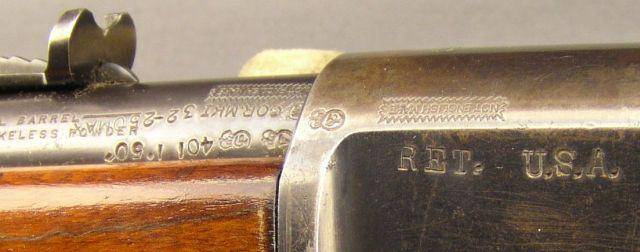
Hallmarks pointing to the "travel" rifle. Photo Forum.guns.ru
Before the outbreak of World War I, the M1910 rifle, like its predecessors, was a purely civilian hunting weapon. Military use of such weapons was not planned. Nevertheless, the beginning of the war in Europe forced the command of several armies to reconsider their views and to search for new self-loading weapons with the required characteristics that could increase the firepower of the units.
In 1915, France ordered a number of different weapons from Winchester, including 150 self-loading rifles Model 1910. Included with the weapon were spare shops and 25 thousand cartridges .401 Winchester Self-Loading. This weapon was intended to be transferred to certain units in order to strengthen the rifle subunits. Losing in power with the available magazine rifles, the self-loading weapon was distinguished by a higher rate of fire, which in some cases gave a definite advantage.
It is known that at the end of 1917, the French military ordered another 400 thousand .401 WSL cartridges. This fact speaks directly about the continued operation of the M1910 rifles for several years. In addition, it may be indirect evidence that, after 1915, new shipments of rifles took place, information about which, however, has not been preserved.
In 1915, the Russian military acquired a significant number of American-made rifles of several models. In particular, 500 units of the Winchester Model 1907 and the same quantity of M1910 were purchased. Along with the weapon, the required types of cartridges were also ordered. Some sources mention that rifles chambered for the .401 WSL came in parts of the South-Western Front, which later participated in the Brusilov breakthrough. However, detailed information on the exploitation of such weapons by the Russian Imperial Army is not available.
After the events of 1917, the American-made rifle awaited a very difficult fate. This weapon went to many members of the Civil War, and then could repeatedly change the owners, becoming a fighting trophy. In addition, there were more interesting stories. The model 1910 rifle, given to Russia in the 1915 year, has a certain reputation. After the outbreak of the Civil War, this weapon fell to the White Guard units, who used it until their evacuation. Then the rifle was transferred to the British military, who continued its operation, or sent to storage. Two decades later, the rifle was removed from storage and transferred to Homeguard for use in possible battles with the German landing force. Already after the end of the Second World War, this sample again came to the United States, after some time receiving its share of fame.
Production of self-loading rifles Winchester Model 1910 continued until the 1936 year. During this time, the weapons factory managed to release and transfer to customers a little less than 20800 rifles and several million rounds for them. Serial weapons were sold both in the United States and in many foreign countries. In addition, a noticeable number of rifles were produced and sold in accordance with the contracts of the military departments of foreign countries.
The design of the M1910 rifle was based on sophisticated technical solutions and differed from its predecessors only by some of the features associated with the use of a new original high-power cartridge. Such an approach to the creation of small arms again justified itself. Once again, the company Winchester Repeating Arms Company and its designer TK. Johnson presented an interesting sample of small arms, which was able to produce and sell for a long time.
On the materials of the sites:
http://historicalfirearms.info/
http://militaryfactory.com/
http://armoury-online.ru/
http://ww1.milua.org/

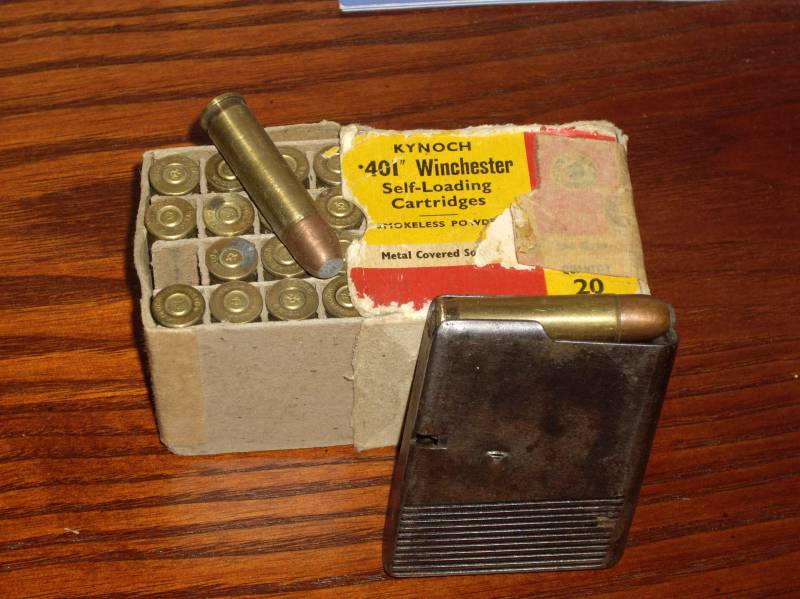
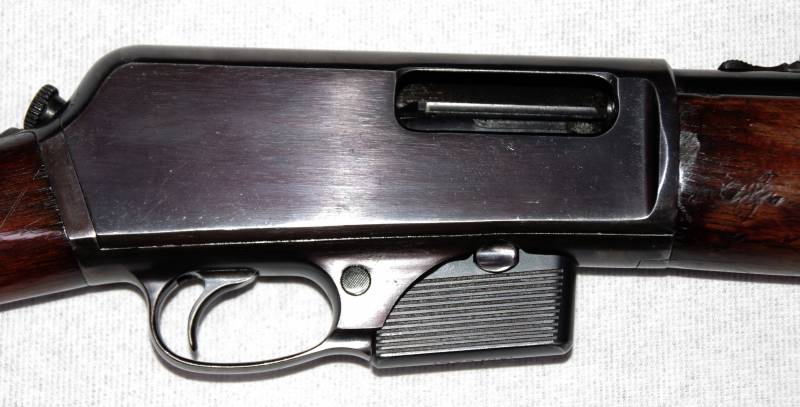
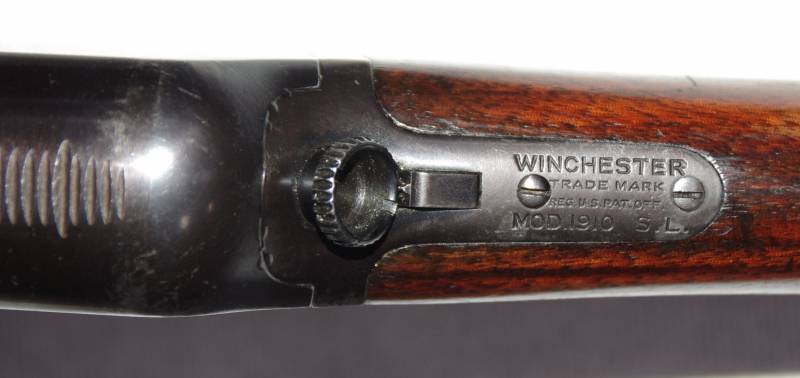
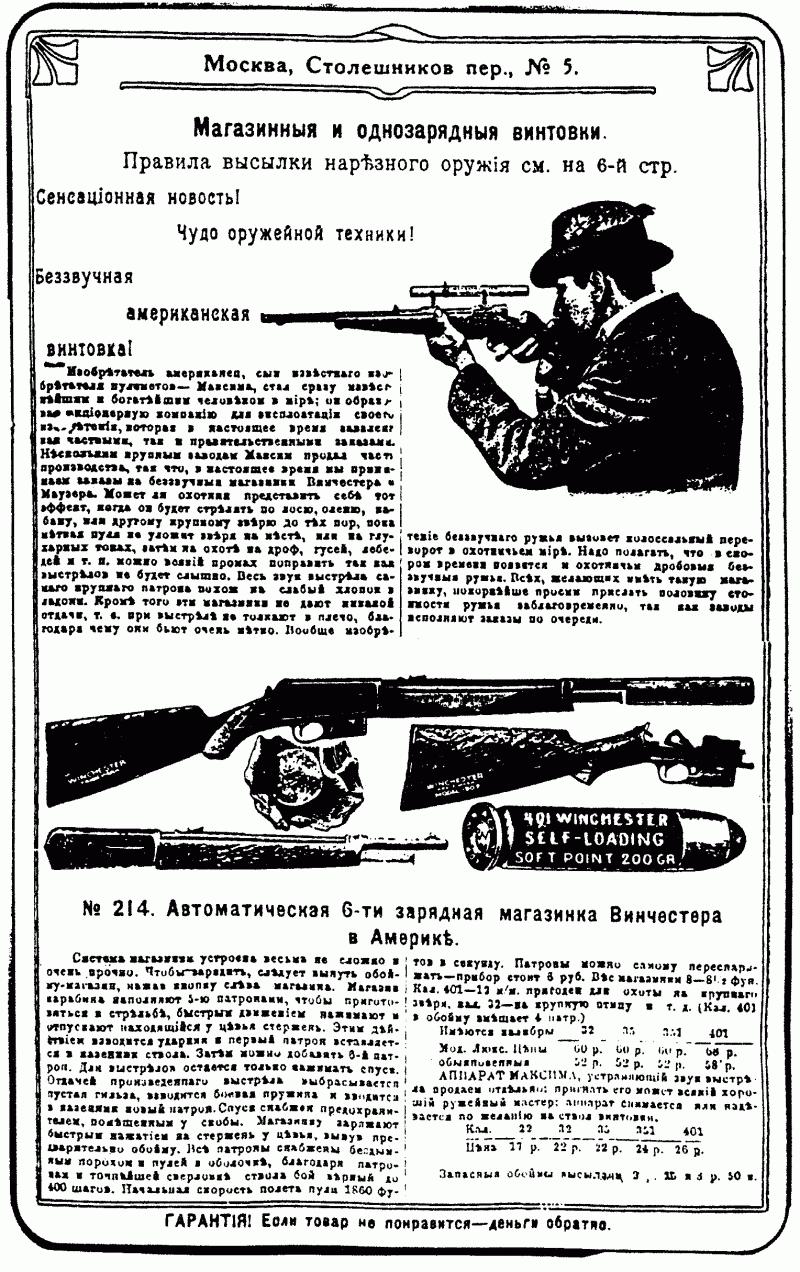
Information